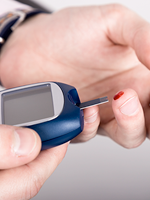Based on a poster titled “Hypertension-related Employee Impairment in the Workplace” by Feride H. Frech-Tamas, MPH, RPh; Frank M. Brocato, MSHA, DMin; Joseph J. Doyle, RPh, MBA; Spencer Borden, MD, MBA; R. Joyce Barnes, RN, EED, PhD; and Charles Dion, MA, presented at the Academy of Managed Care Pharmacy Annual Meeting, April 18, 2008, in San Francisco, CA.
Disease management and wellness programs in the workplace are making a difference among hypertensive patients, according to self-reported responses to a Web-based questionnaire posted by Feride H. Frech-Tamas, MPH, RPh, and colleagues. The objective of the questionnaire was to determine the impact of hypertension therapy on employees’ health and productivity.
It has been estimated that hypertension is controlled in only 31% to 35% of the many millions of Americans with this condition.1,2 Between 2001 and 2002, hypertension accounted for 45.3 office visits annually.3 Associated morbidity and mortality costs have been estimated at more than $66 billion, in addition to the cost of lost productivity, estimated at between $7.8 billion and $9.3 billion.2
The Web-based questionnaire attempted to capture health risks and healthcare services within the past 12 months, including work productivity, quality of life, and care satisfaction. The general survey was followed by a survey targeting 14,224 full-time employees at 4 companies during 2005-2006. These findings were compared with 1998-1999 findings from 24,000 households of fulltime employees. All data were self-reported.
In this current survey, 262 respondents had hypertension, representing 16% of the 1669 employees who completed the general survey. Of the hypertensive employees (mean age, 42.5 years), 56% were women (mean body mass index, 31.8 kg/m2). Compared with respondents without hypertension, those with hypertension were more likely to be current smokers (11.9% vs 23.2%, respectively) and past smokers (26.7% vs 32.5%, respectively). Approximately 72% of respondents with hypertension had been diagnosed with hypertension and were taking antihypertensive medications. The most prevalent comorbidities were hyperlipidemia (55.4%), chest pain (19.5%), and diabetes (18.5%).
More than 92% of respondents indicated that they always took their antihypertensive medication as directed, and 89% found them “extremely effective.” Medications were stopped for a variety of reasons, including feeling better (13%), completing the regimen (13%), and not requiring further medication (14%).
Physical component summary scores were lower than the US norm, but mental component summary scores were slightly higher than the US norm. A similar pattern was seen among diabetic respondents.
Overall, lost work days were lower in 2005-2006 than in 1998-1999 (Table). Time off from work was 0.7 days for employees with hypertension and 1.8 for patients with diabetes in a 4-week period during 2005- 2006 compared with 1.2 days and 2.1 days in 1998- 1999. Total work lost for patients with heart disease and hypertension plus diabetes was also reduced for patients with heart disease, from 2.7 days in 1998-1999 to 1.7 days in 2005-2006.
Disease management and health wellness programs have made their mark in bringing the importance of treatment for hypertension to the forefront, as shown in increased treatment rates. There remain, however, further opportunities that might improve the health of employees with hypertension, especially with regard to obesity, smoking cessation, and improving compliance with antihypertensive regimens.
References
1. Hajjar I, Kotchen TA. Trends in prevalence, awareness, treatment, and control of hypertension in the United States, 1988-2000. JAMA. 2003;290:199-206.
2. Rosamond W, Flegal K, Friday G, et al. Heart disease and stroke statistics— 2007 update: a report from the American Heart Association Statistics Committee and Stroke Statistics Subcommittee. Circulation. 2007;115:e69-e171.
3. Cherry DK, Burt CW, Woodwell DA. National Ambulatory Medical Care Survey: 2001 summary. Adv Data. 2003;337:1-44.




